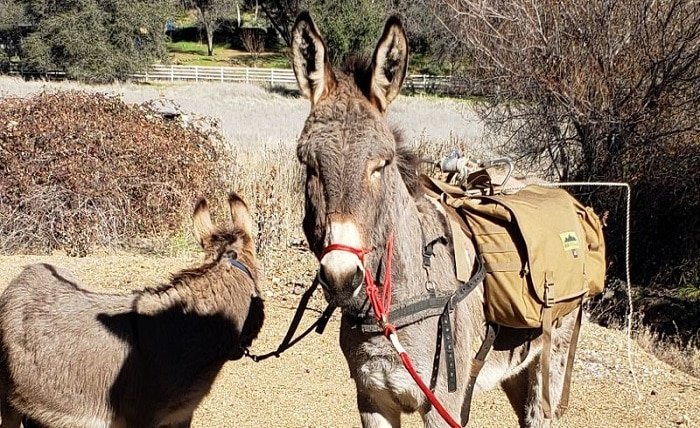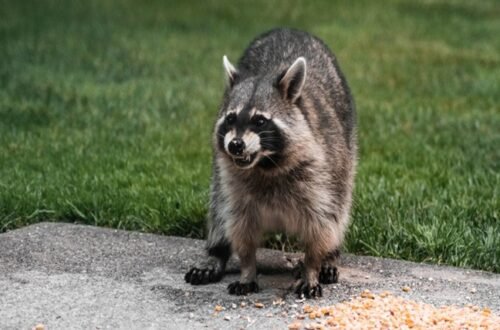Introduction
The world of animals is filled with intriguing dynamics, and two creatures that stand out in the wild and domestic settings are the pet donkey and the wild elk. These two animals, though seemingly different in their natural habitats and lifestyles, share fascinating behavioral traits and environmental interactions. Donkeys, often kept as pets in farms and homes, have a long history as loyal companions to humans, while wild elk roam the forests and plains of North America, playing a crucial role in their ecosystems.
Despite their different living situations, there are some interesting aspects of their behavior that overlap. In this blog post, we will explore the unique relationship between pet donkey and wild elk, focusing on their behaviors, care requirements, and the remarkable connections that can be formed between these species when they meet in the wild or domestic environments.
The Behavior of a Pet Donkey: Why They Make Great Companions
A pet donkey can be a charming addition to any farm or home. These animals are known for their friendly and loyal nature, often bonding closely with their owners. Despite their reputation for being stubborn, donkeys are actually very intelligent and sensitive animals, able to form strong emotional connections with their human companions.
Donkeys are social animals, and they thrive on companionship. If you are keeping a pet donkey, it’s crucial to understand that they are herd animals, meaning they do better when they have the company of other donkeys or animals. However, they can also bond with other species, such as horses, goats, or even wild elk if they meet in a shared environment.
A pet donkey’s behavior is characterized by curiosity and playfulness, and they often engage in activities that demonstrate their intelligence, such as problem-solving or exploring their surroundings. Their loyalty and affectionate nature make them ideal companions, and they can form bonds with both humans and other animals, potentially including wild elk under certain conditions.
The Social and Survival Behavior of Wild Elk
On the other hand, wild elk are large, majestic animals that live in herds in forested areas and open plains. Known for their impressive antlers and strong survival instincts, wild elk follow complex social structures within their herds. These herds are typically led by a dominant male during the rutting season, and the group works together to forage, protect their young, and evade predators.
Wild elk exhibit a variety of behaviors that are essential for their survival in the wild. They communicate through vocalizations, body language, and scent marking. Elk are herbivores, primarily feeding on grasses, shrubs, and other plant material that they can find in their natural habitat. Their behavior revolves around maintaining their herd structure and ensuring the survival of the group, particularly during harsh weather conditions or predator threats.
While wild elk and pet donkeys may seem vastly different, both species share a fundamental need for social interaction and protection. While donkeys often form bonds with other animals, wild elk rely on their herds for survival, emphasizing the importance of community in both domestic and wild settings.
Can Pet Donkey and Wild Elk Coexist? Interactions in the Wild
While pet donkeys and wild elk typically inhabit different environments, it is possible for the two animals to coexist peacefully, especially in regions where both species might come into contact. For example, in areas where ranches or farms are located near the wilderness, there are instances where pet donkeys and wild elk share the same territory. In these situations, donkeys might come across wild elk in their daily foraging or grazing routines.
Interestingly, donkeys are known for their protective instincts, especially when it comes to guarding livestock. In some areas, pet donkeys are even used to protect herds of sheep or goats from predators like wolves and coyotes. Their instinct to be territorial could cause some tension with wild elk if they happen to cross paths, especially if the elk are perceived as a threat. However, the encounter can often be peaceful, with both animals avoiding each other to maintain their space.
Wild elk, being larger and more accustomed to wild environments, may view pet donkeys as non-threatening, but the relationship will largely depend on the animals’ individual temperaments and the surrounding conditions. In general, it is not common for pet donkeys and wild elk to interact regularly, but their coexistence in shared areas is entirely possible under the right circumstances.
How to Care for a Pet Donkey in an Environment Where Wild Elk Roam
If you live in an area where wild elk are prevalent and you keep a pet donkey, there are certain precautions and care routines to consider. Donkeys are hardy animals that can withstand a variety of weather conditions, but their interactions with wild elk may require additional considerations.
First, it’s essential to make sure that your pet donkey has a safe, secure enclosure where they are protected from any potential wild animals. Fencing should be sturdy and high enough to prevent elk from entering the area, as wild elk can be quite large and powerful. Additionally, ensure that the donkey’s shelter is properly maintained, especially during the colder months when both wild elk and donkeys may need to find warmth and protection from the elements.
In areas with frequent encounters with wild elk, it’s a good idea to monitor the behavior of your pet donkey and observe how they react to the presence of wild elk. Some donkeys may become more alert or protective, especially if they are guarding other animals. Training and socializing your donkey with other animals, including those in the wild, can help foster peaceful coexistence, though caution should always be exercised in areas where wildlife is abundant.
The Environmental Impact of Wild Elk on Domestic Animals like Pet Donkey
In regions where wild elk and pet donkeys share the landscape, it’s important to understand how the presence of wild elk can affect domestic animals. Wild elk, as large herbivores, have significant environmental impacts on their habitats. Their grazing habits can affect the local vegetation, which might, in turn, influence the food available for domesticated animals like pet donkeys.
While wild elk generally do not pose a direct threat to pet donkeys, the competition for food sources could become an issue if the wild elk population is large and the grazing areas are limited. Donkeys are herbivores and rely on a steady supply of grass and other plants, and wild elk can often consume a substantial amount of vegetation, leaving less for domestic animals.
Moreover, the presence of wild elk can alter the local ecosystem in ways that might affect pet donkeys indirectly. For example, increased wild elk activity could lead to changes in the local predator population, which might affect the safety of domestic animals. As such, it’s important to manage the land and resources to ensure that both pet donkeys and wild elk can thrive in their respective environments.
Training and Socializing Your Pet Donkey with Other Animals
If you want to foster a positive relationship between your pet donkey and other animals, including the occasional wild elk, training and socialization are key. Donkeys are intelligent creatures, and with the right approach, you can teach them to interact peacefully with other species.
Start by gradually introducing your pet donkey to other animals, both domestic and wild, in a controlled environment. It’s essential to ensure that your donkey feels safe and secure during these encounters. Begin with other domesticated animals, such as goats, horses, or even friendly dogs, before introducing them to wildlife like wild elk. Be patient and observe your donkey’s behavior as they get used to new animals.
If you live in an area where wild elk roam, make sure your donkey has a safe space where they can retreat if they feel threatened. Though donkeys are protective, they should never be placed in situations where they are at risk of harm. Proper training can help your pet donkey understand how to handle encounters with wild elk and other wildlife, ensuring they stay calm and protected.
How to Safely Introduce a Pet Donkey to a Herd of Wild Elk
In rare circumstances, pet donkeys may come into direct contact with a herd of wild elk, especially if they share the same grazing grounds. While wild elk are generally not aggressive toward domestic animals, it’s important to approach such situations with caution.
Before introducing your pet donkey to a herd of wild elk, ensure that the area is secure and that both animals are not under stress. Keep a close eye on both the donkey and the elk for signs of discomfort, aggression, or fear. Always have a secure escape plan for your donkey in case the situation escalates. Wild elk can be unpredictable, and even a small amount of stress can lead to unpredictable behavior.
The best way to handle these encounters is by ensuring your pet donkey remains calm and comfortable, while allowing the wild elk to move freely. This will create an environment of mutual respect, with both species coexisting without undue tension.
Conclusion
While pet donkeys and wild elk may seem like two very different animals, they share several fascinating similarities. Both species are social creatures with strong bonds to their communities, whether that’s a donkey’s bond with other domesticated animals or an elk’s attachment to its herd. By understanding their behavior and taking steps to care for both species, you can ensure that your pet donkey and the surrounding wildlife, including wild elk, can coexist peacefully.
Whether you’re fascinated by the natural behaviors of wild elk or enjoy the loyal companionship of a pet donkey, it’s clear that these animals can offer valuable lessons in the importance of social structures, loyalty, and environmental balance.
FAQs
1. Can a pet donkey and wild elk live together in the same habitat?
Yes, pet donkeys and wild elk can share the same habitat, although interactions between them are usually peaceful. However, providing ample space and resources is essential.
2. Do wild elk pose a threat to pet donkeys?
Generally, wild elk do not pose a threat to pet donkeys. However, donkeys should be kept in secure enclosures to avoid potential conflicts or stress.
3. How do I protect my pet donkey from wild elk?
To protect your pet donkey from wild elk, ensure they are kept in a secure, fenced area where the elk cannot enter. Monitor interactions to prevent stress or aggression.
4. Are there any benefits to having a pet donkey in an area with wild elk?
Yes, donkeys can act as natural protectors for other domestic animals in areas with wild elk, as they are known to guard against predators.
5. How can I train my pet donkey to coexist with other wildlife like elk?
Start with gradual introductions in controlled environments, ensuring both animals feel secure. Train your donkey to remain calm and avoid confrontation with wildlife.






